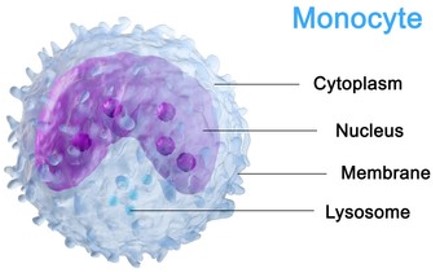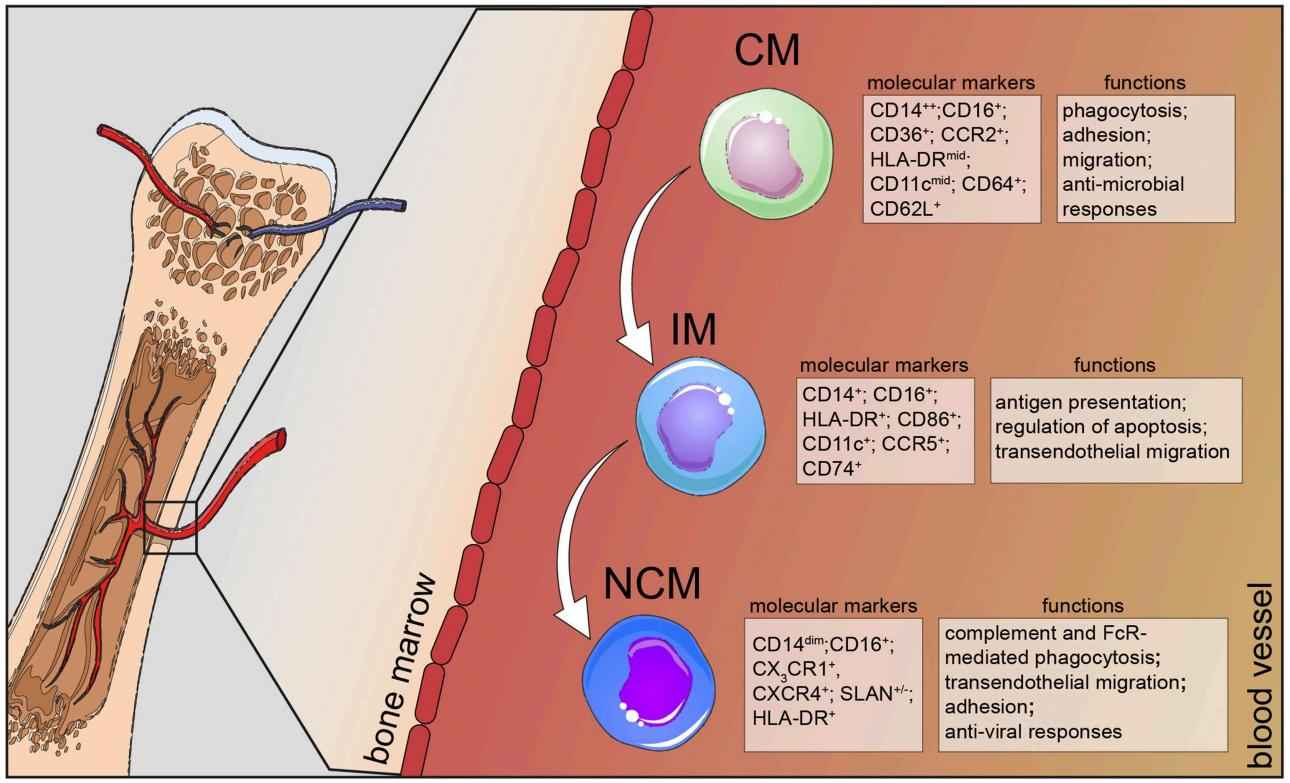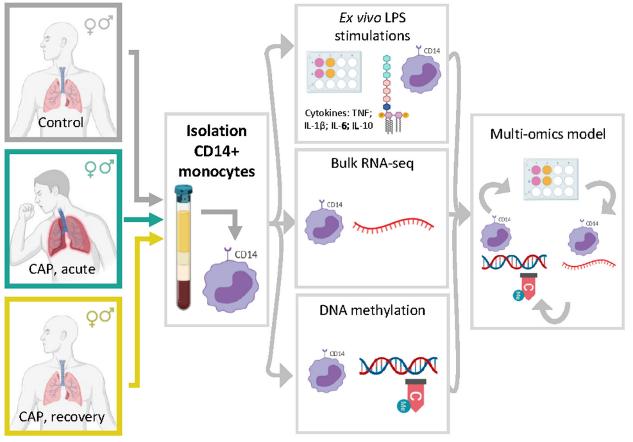Immunomics Services
Immunomics Services for Monocytes
Monocytes are the largest type of leukocyte in the blood and can differentiate into macrophages and monocyte-derived dendritic cells. CD Genomics offers several types of immunomics services to help clients understand the development, differentiation, and function of monocytes.
Introduction to Monocytes
Monocytes are defined as circulating blood cells and account for 10% of human peripheral blood leukocytes and 4% of mouse peripheral blood leukocytes. Monocytes are the largest leukocytes, ranging from 12 to 20 µm in diameter. Monocytes are usually easily identified in peripheral blood because they are relatively large and have coiled bilobed nuclei, often described as kidney shaped.
 Fig.1 A diagram of monocytes.
Fig.1 A diagram of monocytes.
Functions of Monocytes
Monocytes are a type of white blood cell that differentiate into macrophages and dendritic cell populations to regulate cellular homeostasis, especially in the presence of infection and inflammation. In general, monocytes and their macrophage and dendritic cell progeny have three main functions in the immune system, including phagocytosis, antigen presentation, and cytokine production.
Three Types of Monocytes
Human monocyte heterogeneity is based on three subsets subdivided according to CD14 and CD16 expression.
Classical Monocytes
The major population of human monocytes (more than 90%) with high CD14 expression but no CD16 expression (CD14++CD16-) is now referred to as classical monocytes. The main functions of classical monocytes include phagocytosis, adhesion, migration, anti-microbial and immune response.
Intermediate Monocytes
The secondary population of human monocytes (more than 10%) is further subdivided into intermediate subpopulations with low CD16 and high CD14 (CD14++CD16+). Intermediate monocytes are antigen-presenting cells that also stimulate T-cell production, help repair damaged blood vessels and participate in the inflammatory response.
Non-classical Monocytes
In addition, non-classical monocytes have high CD16 but relatively low CD14 expression (CD14+CD16++). Non-classical monocytes look for signs of cellular damage and act as antigen-presenting cells to pass on information to T cells. Non-classical cells known as pro-inflammatory cells secrete inflammatory cytokines when they detect infected cells.
 Fig.2 Human monocyte subsets in health. (Kapellos, T. S., et al., 2019)
Fig.2 Human monocyte subsets in health. (Kapellos, T. S., et al., 2019)
Immunomics Studies for Monocytes
Monocytes are important coordinators of the immune response. A comprehensive and large-scale omics analysis of monocytes can broaden our understanding of monocyte function in health or disease conditions.
A study based on a systematic multi-omics approach to reveal changes in circulating monocyte dynamics in community-acquired pneumonia (CAP) patients found that circulating acute phase monocytes in patients showed significant transcriptional changes with elevated genes involved in cell metabolism, mobility, cell cycle, cytokine signaling, and antimicrobial pathways, accompanied by reduced expression of genes involved in protein translation and antigen presentation.
 Fig.3 Schematic representation of research workflow. (Brands, X., et al., 2021)
Fig.3 Schematic representation of research workflow. (Brands, X., et al., 2021)
Our Services
The omics study of immune cells is a rapidly developing discipline, and these research methods offer unique advantages in a number of areas of scientific research and clinical studies, such as early diagnosis of disease, biomarker detection, and prognosis prediction. CD Genomics offers several types of immunomics services to help clients explore the development and function of monocytes.
Why Choose Us
CD Genomics is a service provider for immunomics and data analysis. We support your analytical needs, from small to large studies, as well as clinical applications. Our mission is to help our clients gain a deeper understanding and study of the fundamental mechanisms of the immune system. Please contact us for more information.
References
- Kapellos, T. S., Bonaguro, L., Gemünd, I., Reusch, N., Saglam, A., Hinkley, E. R., & Schultze, J. L. (2019). Human monocyte subsets and phenotypes in major chronic inflammatory diseases. Frontiers in immunology, 10, 2035.
- Brands, X., Haak, B. W., Klarenbeek, A. M., Butler, J., Uhel, F., Qin, W., ... & Scicluna, B. P. (2021). An epigenetic and transcriptomic signature of immune tolerance in human monocytes through multi-omics integration. Genome Medicine, 13(1), 1-17.
